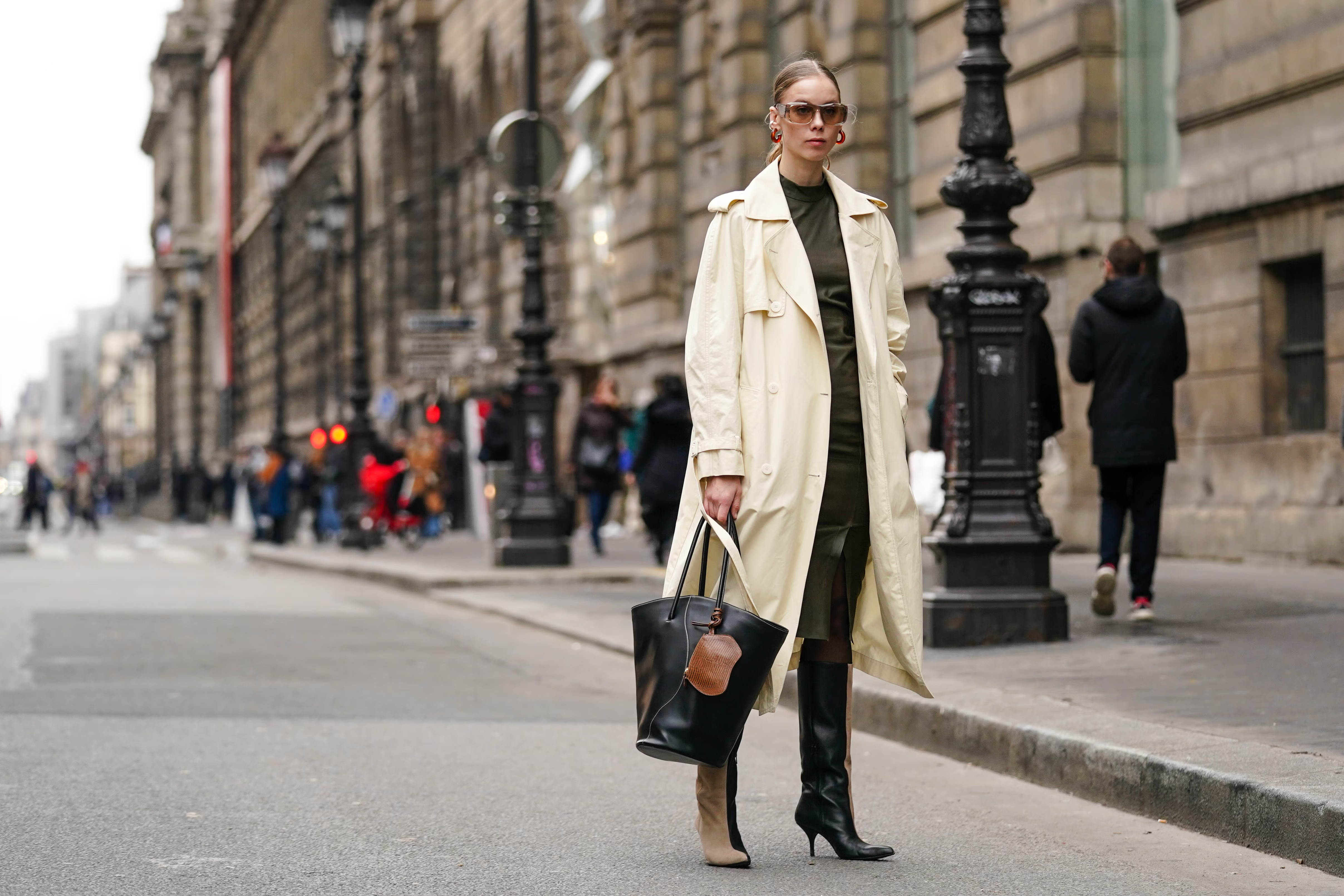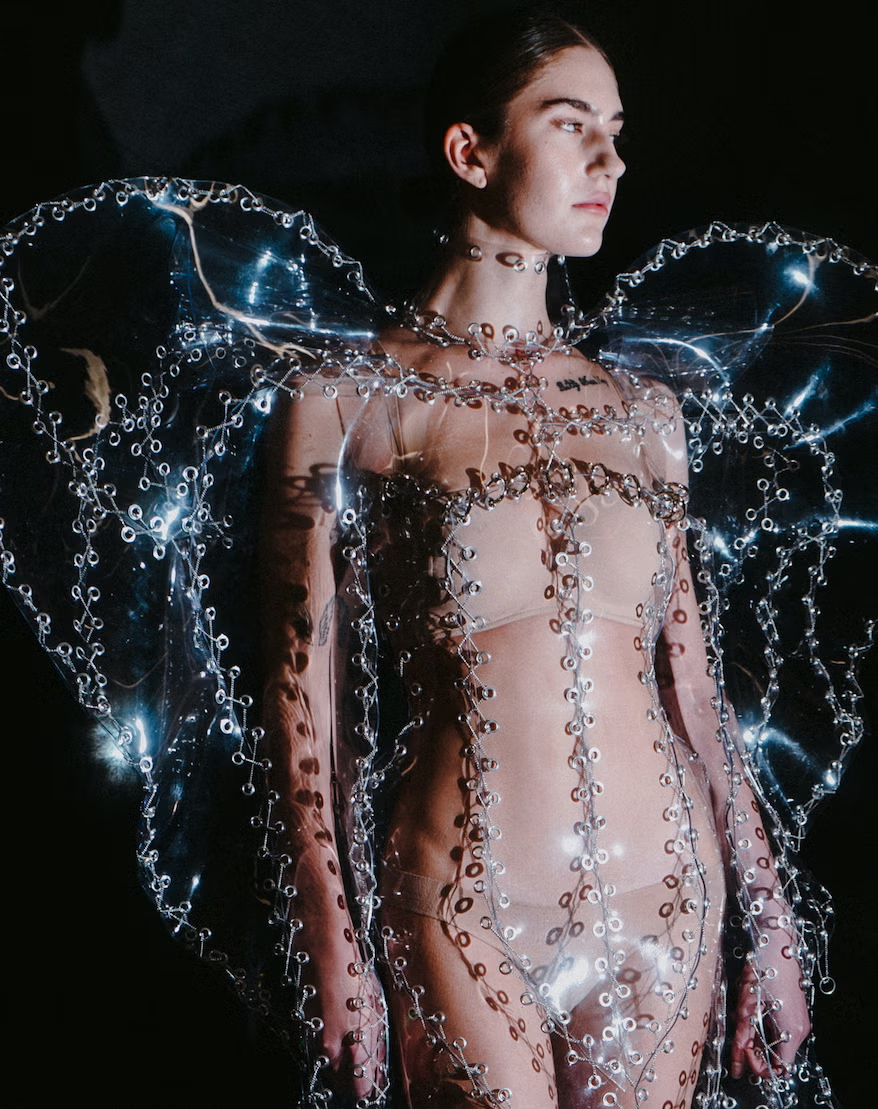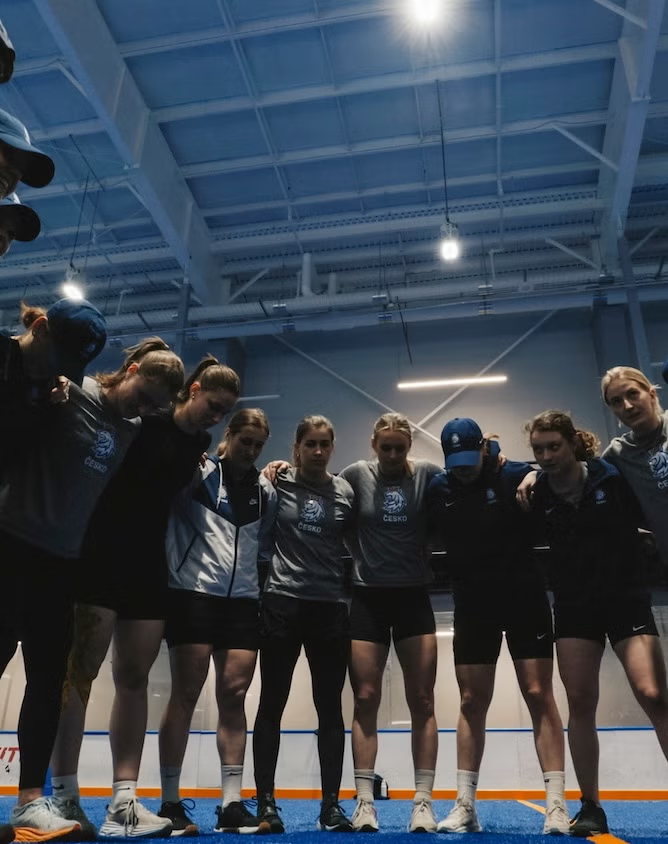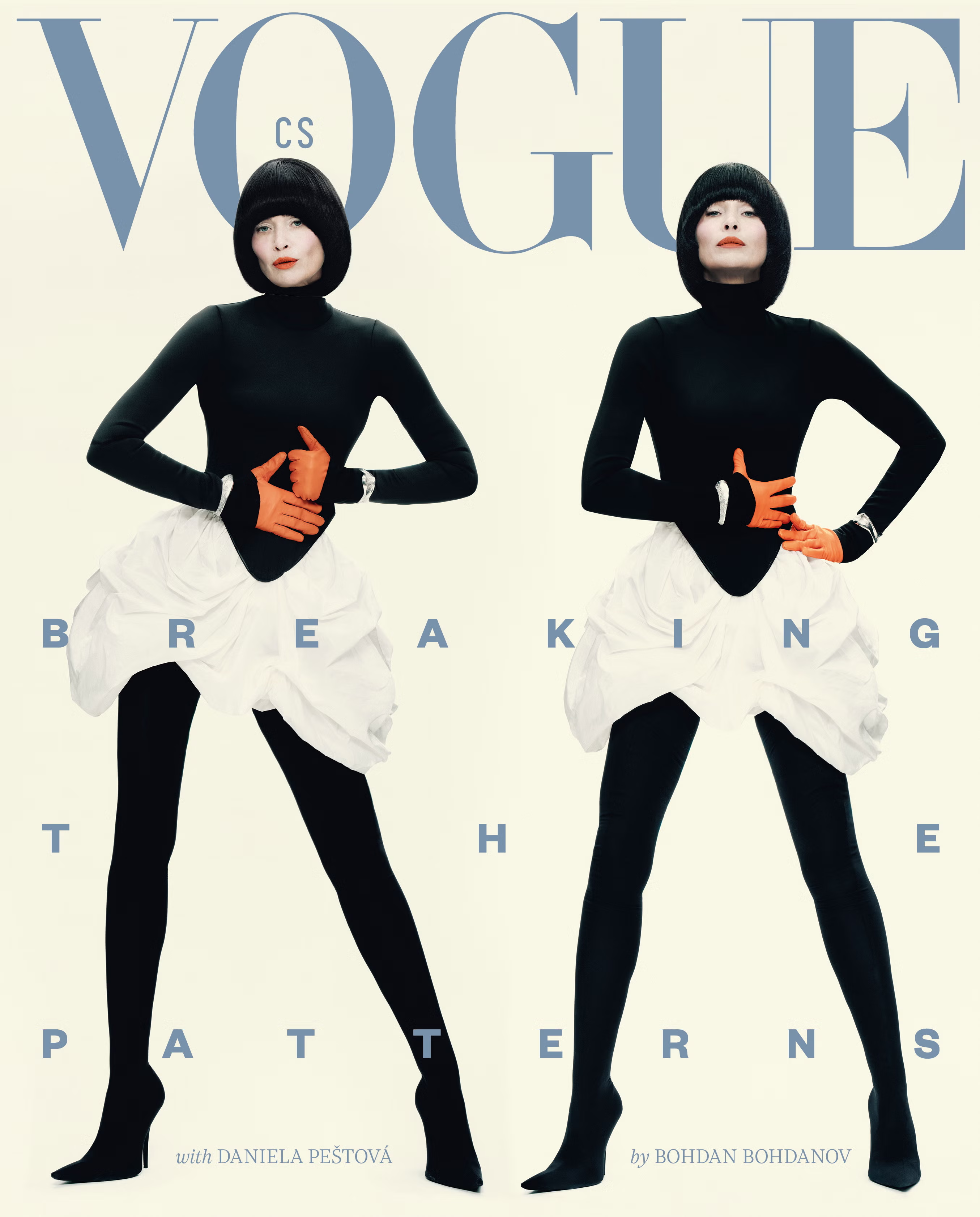Vogue CS in English
All Change!
Sarah Mower26. 8. 2021
After the most seismic shock that anyone of us can remember – this pandemic of the past year and a half – I have seen beautiful and progressive things emerging into the light. It’s a light that makes fashion, our values, our desires look and feel very different from how they did a couple of years ago. Things that never seemed possible are being done. Stupid rules are being broken and rewritten. Our eyes and our hearts are now excited by a different kind of beauty. It’s not about ‘going back to normal’. At last, we can look forward. A real hope that change is happening has entered the game.
Here’s a list of some of the things – structural, and emotional – that convince me that we’re living in revolutionary times. Movements that seemed marginal, or were unheard-of before, are now the new normal: recycling, upcycling, re-selling, renting, repairing. There’s a visible swing towards localism, co-operation, inclusivity, circularity and social responsibility. All this is working within us to change what we want, making us revalue what we regard as ‘fashionable’ and ‘ luxurious’. In a time when everything was disrupted – making travel and fashion shows all but impossible – something transformational has taken root.

Foto: Getty Images
Most excitingly of all, this system-change is down to the brilliant leadership of young people. Quite obviously, they’re the future of everything that fashion will become – they always are. But this generation, Gen Z, if we want to call them that, are change-makers on levels we’ve never seen before.
I can date the beginning of this feeling exactly to 17 March 2020. On that day, before my own country, the UK, had even called a lockdown, I woke up to see an Instagram post from Prague by the fashion design studio UMPRUM (Academy of Arts, Architecture and Design in Prague). It showed students organising to make masks to give to hospitals. They were the first fashion people anywhere to react to the emergency of covid and the shortage of PPE sweeping the world, acting on their own initiative. Moreover, they were using deadstock fabric supplied by The Textile Mountain, the Czech Republic’s “first store and repair shop, selling deadstock textiles and haberdashery”.
I know this was the date because I reposted it on my Instagram feed, with a message I had been sent by their tutor, Alice. “Today our social networks are full of various face-mask sewing instructions and tutorials,” she wrote. “And practically the whole country is sewing now.” There, you had it in one: young people stepping up to apply their fashion skills to do good in the world while using ecologically sound methods – and sharing their information to save lives. I mean, talk about taking a lead.
That pattern of ultra-practical activism was soon replicated by three young women designers in Britain who formed the Emergency Designer Network. They organised a home production and distribution system for PPE overnight, working with hospitals and care homes crying out for help when the British government was failing them. Within weeks, giants of the fashion industry – Prada, Versace, Armani, LVMH, and many more – were responding with production and financial donations across Italy and France. Something that had never been possible was suddenly happening. In an industry that has always been regarded as selfish, competitive and shallow, people were collaborating, giving and organising to transform the power of fashion into a massive force for social good.
That experience of people in fashion coming together so magnificently at every level from home to corporate proved something: when we want to change, we have the power to do it. So many more transformative changes in attitudes – in our own heads as fashion consumers, and up there in boardrooms – have taken root since that time. I even heard it resounding over social media on the day it was announced that Phoebe Philo is set to make a comeback sometime next year. Women all over planet fashion were saying the same thing in unison: “I’m starting to save now!”
Saving? When has the idea “Saving” ever come into the collective conversation about wanting to buy luxury fashion? Not for generations, I’d say. After decades of over-production fuelled by the culture of instant gratification – the giant trap we’ve all fallen into to the detriment of ourselves and the planet – this is a very new emotional motivation. That is part of an internal revolution, too: the idea of taking time, waiting to consider the ‘right’ purchase, resisting the impulse to keep wasting money on things we don’t really want.
That works towards redefining “luxury” as something that’s to be treasured, something that lasts. It’s not just about the anticipation of Phoebe Philo’s return, no matter how exciting that debut will be for everyone who has worn her clothes – day in day out – since she left Celine in 2017. Her absence proved that the value of her clothes wasn’t just timeless, but it actually grew on the re-selling market as well. In the space of five years, phenomenal new systems and businesses for re-selling and hiring fashion have sprung up and become the “new normal”. Again, we should credit young people for being a huge part of bringing about the change in attitude that has proved that reselling and re-wearing clothes can be huge business. In July, the Depop reselling platform – which is used by 30 million Gen Z-ers under the age of 26 – was bought by Etsy for £1.2 billion.
Seeing how much unworn stuff was in our wardrobes (which came home to us during all our lockdown days) and the horror of much clothing goes into landfill made us realise that we really don’t want to live with this anymore. The beauty of it is that now there’s no contradiction between the joy of wearing amazing clothes and being part of the movement towards sustainable behaviour. The economics of it are so much better on a personal level as well as on the macro-level, which contributes to extending the life of clothes by keeping them in circulation for longer. Even more importantly, it starts to put a brake on the fashion industry’s most climate-heating behaviour of all: the eco-system destroying, carbon-emitting extraction of the earth’s raw materials to make synthetics (polyester is made from mined petroleum), and the pesticides and fertilizers responsible for depleting soil and damaging human health in farming.
As individual consumers, we can only do so much to play our part in solving the biggest crisis that faces humanity. Stella McCartney categorically stated this when she called on the political gathering of the G7 countries this summer to act. [Stella McCartney categorically stated this when she was asked to speak at the political gathering of the G7 countries this summer.] Standing in front of the presidents of Canada, France, Germany, Italy, Japan, the United States and the UK, she said: “One of the biggest problems that we have in the fashion industry is we’re not policed in any way. We have no laws or legislations that will put hard stops on our industry.”
It is down to governments to take action on policies to ban damaging industrial behaviours all along the supply chains that are hidden to consumers – and to encourage the fashion industry to convert itself into a key player in a modern, regenerative ‘Green Economy’. That a fashion designer should have been invited to say that face-to-face to the world’s most powerful politicians is a massive accolade to Stella McCartney as a pioneer, leader and committed practitioner of sustainability. Increasingly, she is being listened to. As part of the LVMH group, she advises the owner, Bernard Arnault. In 2019, The Kering Group’s Francois Henri Pinault launched The Fashion Pact, a global coalition of fashion and textile companies and their suppliers that have a commitment to “stopping global warming, restoring biodiversity and protecting the oceans.” Seventy members, including Chanel, Hermes, Salvatore Ferragamo and Adidas have now signed up. This is another example of co-operation across competing companies that has never happened before.
Still, the most rapid shift to towards making change is amongst the youngest. More or less every fashion student and independent graduate designer start-up I’ve seen over the past five years have automatically normalised sustainability in what they do – upcylcing deadstock fabric, using natural dyes, living and sourcing locally to reduce carbon emissions – to the point that many of them don’t even mention it. All they want to do is to make great, exciting clothes – in slow ways, using hand-made crafts, often selling direct orders to customers. This generation is already there as a new ‘Green Economy’, cleaning up the fashion industry’s waste problem, while using their creativity to convert it into brilliant clothes.
They are also the generation who are revolutionising fashion by challenging everything to do with equality. Gender, race, body-positivity, disability: all these issues to do with the inclusive values of young people have shaken the establishment – shamed it, in fact – into reforming itself. The Black Lives Matter movement, driven by youth protests all over the world in the wake of the 2020 murder of George Floyd, prompted a flurry of commitments to diversity and inclusion at the top of major fashion corporations. The recent appointment of Virgil Abloh to an advisory position across a range of LVMH brands shows how far, and how seriously, the advancement of Black talent – and the global youth market which follows it – is now being taken. No business now wants to be left behind or called out for causing offence, because this – the way young people want to see themselves, their identities reflected and celebrated by fashion – is absolutely the difference between success and failure in the future.
Never before have we seen a time when ethics and creativity have joined forces as the leading progressive dynamic in fashion. Young designers were the ones who brought gender-fluidity and trans models to runways. Young designers were the ones who were the first to include models of all sizes in their shows. Now, youngest designers are also the ones who have turned to celebrating and designing for people who have disabilities.
Ellen Fowles graduated from the Royal College of Art last year with an amazingly chic collection of adaptive wear, designed so that both she and her grandmother, a wheelchair-user, could wear it. In 2021, Chemiah Dewey graduated as the London College of Fashion’s prize winner with her sustainable, adaptive brand for women with Dwarfism. And in Prague, Simona Rybakova swept off the Rector’s Prize of the year for her collection starring and made for people with disabilities “who are not lucky enough to fit ‘ fashionable’ clothes.”
Great young creative minds are thinking alike – and differently – to reshape and reform what “ fashion” is, in so many impressive ways. During the darkest days of the pandemic, when everything was on pause, there was talk of the hope that fashion would emerge with a ‘reset’. Yes, we all need to change our ways. Governments and industry definitely need to go much faster to reach carbon neutrality. But now, looking around, I can really see that the hope is becoming real.
Vogue
Doporučuje

Móda
Nemusíme se doprošovat, aby nás respektovali, říká návrhář Sander Bos
Jana Patočková20. 10. 2025
Vogue Daily
Zářijová Vogue CS věští, že budoucnost je ve vás. Jděte a tvořte
Danica Kovářová20. 8. 2025
Vogue Leaders
